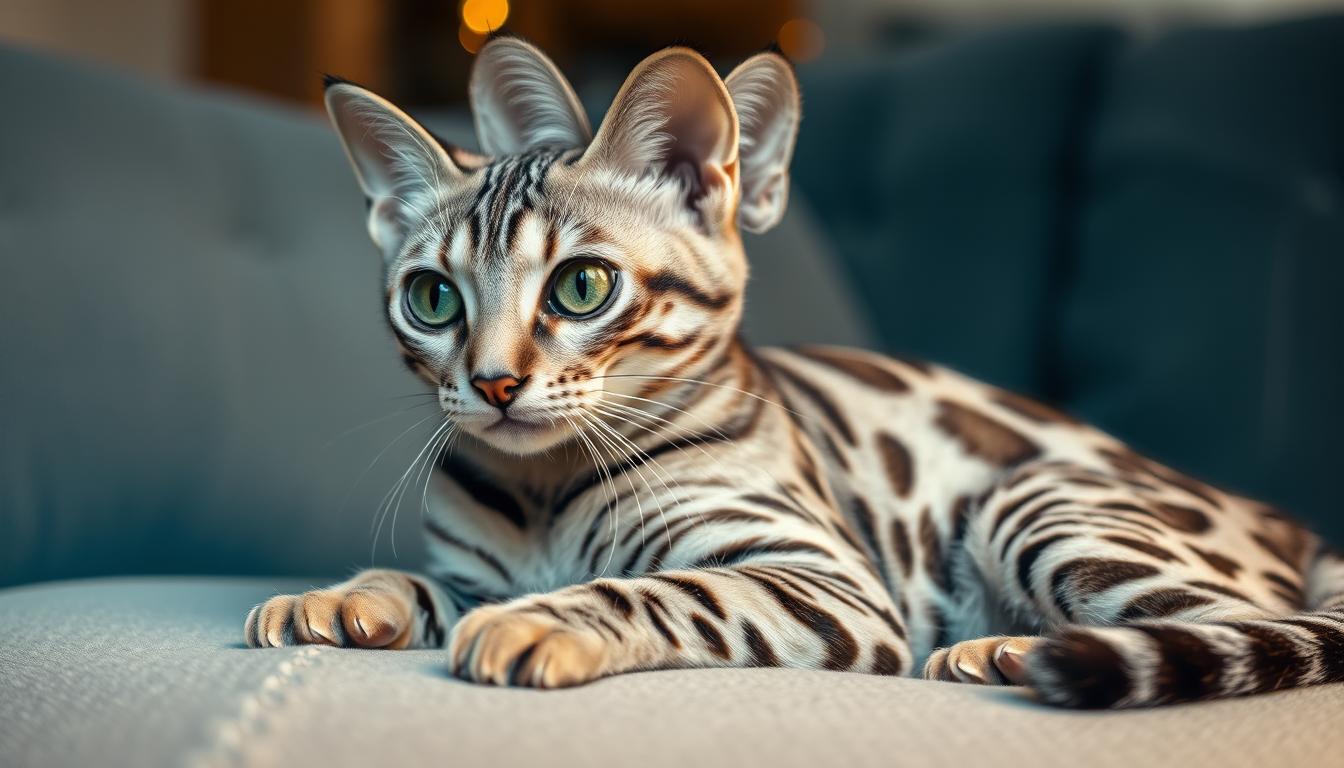Introduction
What is a Silver Bengal Cat?
Silver Bengal cats are a captivating and unique breed, known for their striking appearance and dynamic personality. Their shimmering, silver coats and distinctive spots make them stand out among other cat breeds. But what exactly is a Silver Bengal cat, and why are they so special?
Brief History of the Silver Bengal Cat
The Silver Bengal cat is a relatively new addition to the Bengal breed, which itself was developed in the 1980s. In an attempt to create a cat with a wild look but a domestic demeanor, the breed was created through a mix between domestic cats and Asian leopard cats.The silver coloration was introduced later, through careful breeding to enhance the Bengal’s already stunning looks.
Popularity and Demand
Silver Bengals have grown in popularity due to their exotic look and friendly nature. Their unique appearance, combined with their active and affectionate personalities, makes them highly sought after by cat enthusiasts worldwide.
Characteristics of Silver Bengal Cats
Physical Appearance
Silver Bengal cats are medium to large-sized cats, with a sleek, muscular build. Their bodies are designed for agility and speed, much like their wild ancestors. They have broad heads, large almond-shaped eyes, and small to medium-sized ears that are rounded at the tips.
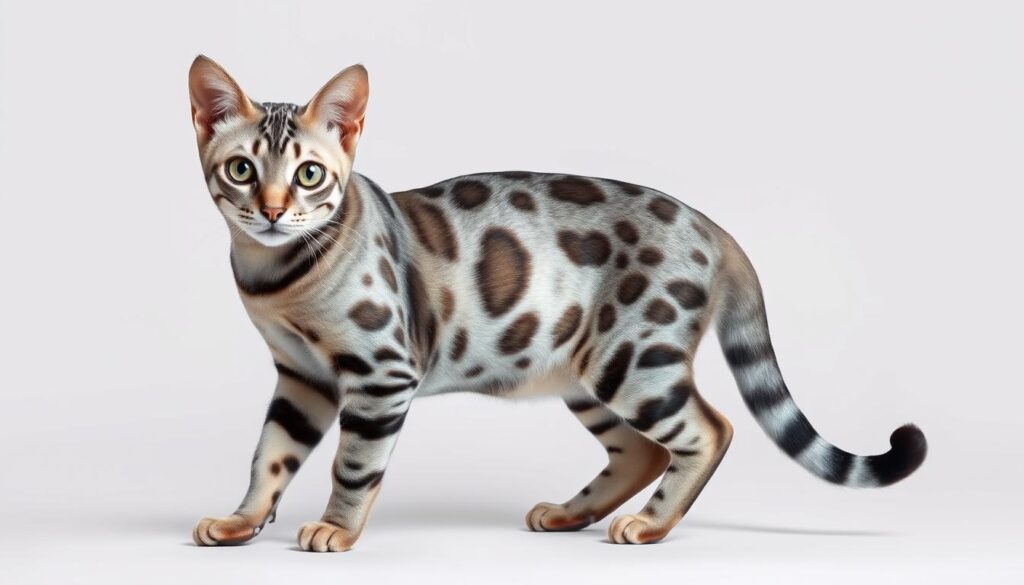
Coat Colors and Patterns
The coat of a Silver Bengal cat is its most distinguishing feature. The base color ranges from light silver to dark pewter, with contrasting black or charcoal spots or marbling. The glittering effect on their fur adds to their allure, making them look like they are dusted with silver.
Personality Traits
Silver Bengals are famous for their high energy levels and playful nature. They are intelligent, curious, and love to engage in interactive play. They may seem untamed, yet they are loving and like spending time with their families. They are also known for their vocal nature, often communicating with chirps and meows.
Silver Bengal Cat Genetics
Genetic Background
The Bengal breed was created by breeding domestic cats with the wild Asian leopard cat. This mix resulted in a cat that retained the wild, exotic look but with a tame and friendly personality. The silver coloration was introduced by breeding Bengals with other cats that carried the silver gene.
How the Silver Color is Achieved
The silver color in Bengal cats is a result of the inhibitor gene, which suppresses the production of yellow pigment, allowing the silver or white base coat to show through. Breeders carefully select for this gene to produce the desired silver coloration in the Bengal breed.
Caring for a Silver Bengal Cat
Diet and Nutrition
Silver Bengals require a balanced diet to maintain their health and energy levels. High-quality cat food which must be rich in protein, is important for these felines. It’s also important to provide fresh water at all times and to monitor their diet to prevent obesity.
Grooming Requirements
Despite their luxurious coats, Silver Bengals are relatively low-maintenance when it comes to grooming. Frequent brushing minimizes shedding and maintains the health of their coat. They are generally good at self-grooming, but occasional baths may be necessary.
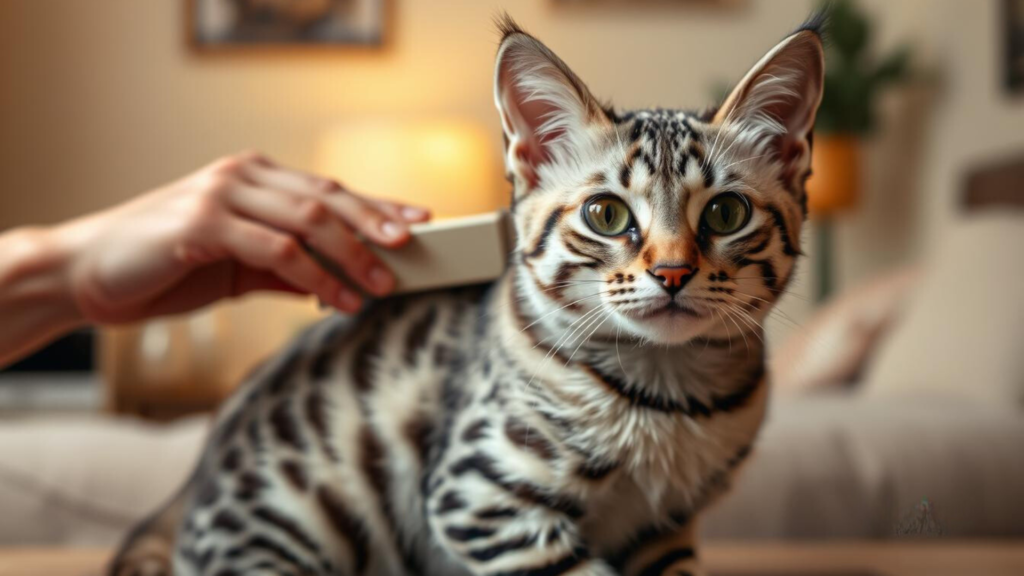
Health and Wellness
Regular vet check-ups are crucial for maintaining the health of your Silver Bengal. Dental care, parasite prevention, and vaccinations are all critical components of their general health. Keeping them active with plenty of play and exercise also contributes to their health.
Training and Socialization
Basic Training Tips
Silver Bengals are highly intelligent and can be trained to perform various tricks and commands. It is important to use positive reinforcement, such as praise, and food. Start training early to instill good behavior and prevent bad habits.
Socialization with Humans and Other Pets
Early socialization is key to ensuring your Silver Bengal is comfortable around people and other animals. Present them to various settings, noises, and sensations. Socialized Bengals are typically friendly, confident, and well-adjusted.
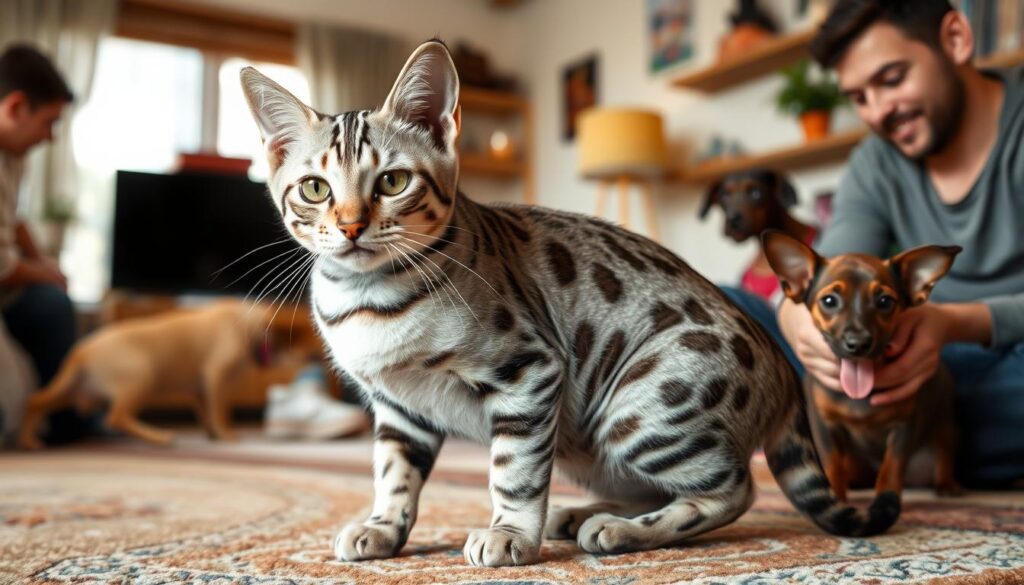
Living with a Silver Bengal Cat
Suitable Living Environments
Silver Bengals do well in settings with lots of room for play and exploration.They enjoy interactive toys, climbing trees, and scratching posts. A stimulating environment helps prevent boredom and behavioral issues.
Interaction and Playtime
These cats are highly social and enjoy spending time with their human companions. Regular playtime is important for their mental and physical health. Interactive toys, laser pointers, and puzzle feeders are great ways to keep them engaged.
Breeding Silver Bengal Cats
Breeding Practices
Breeding Silver Bengals requires knowledge and experience. It’s important to select breeding pairs that are healthy and have desirable traits. Responsible breeders prioritize the health and well-being of the cats over profit.
Challenges in Breeding
Breeding Silver Bengals can be challenging due to the need to maintain genetic diversity and avoid hereditary health issues. The silver coloration gene must be carefully managed to ensure it is passed on to the offspring.
Common Health Issues
Genetic Health Problems
Silver Bengals can be prone to certain genetic health issues, such as hypertrophic cardiomyopathy (HCM) and progressive retinal atrophy (PRA). Regular health screenings and responsible breeding practices help mitigate these risks.
Preventative Care and Regular Checkups
Regular veterinary care is essential for preventing them from different diseases and also for managing health issues. Routine check-ups, vaccinations, and parasite control are important aspects of your Silver Bengal’s health regimen.
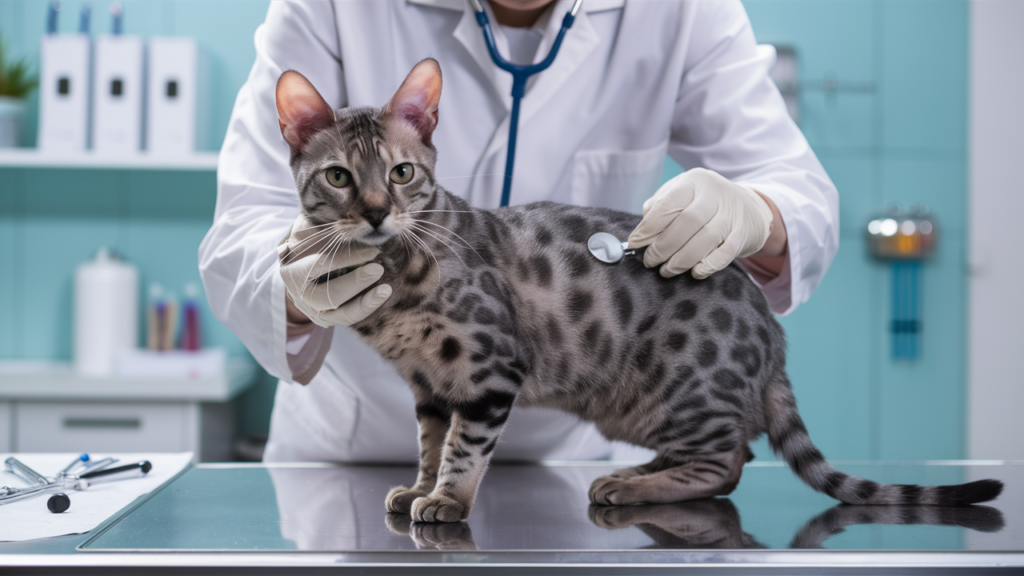
Adoption and Purchase
Where to Find Silver Bengal Cats
Silver Bengals can be found through reputable breeders and rescue organizations. It’s important to research and choose a source that prioritizes the health and welfare of their cats.
Adoption vs. Purchase
Adopting a Silver Bengal from a rescue organization can be a rewarding experience and provides a home to a cat in need. Purchasing from a breeder ensures you know the cat’s genetic background and can select specific traits.
Cost of Owning a Silver Bengal Cat
Initial Costs
The initial cost of a Silver Bengal can be high, depending on the breeder and the cat’s lineage. Their prices can range from $1,000 to $3,000 or even more. They are more expensive than other cats.
Ongoing Expenses
Ongoing expenses include food, grooming supplies, veterinary care, and pet insurance. Providing a stimulating environment with toys and climbing structures is also important.
Legal and Ethical Considerations
Ethical Breeding Practices
Ethical breeding practices are essential for maintaining the health and well-being of the breed. Reputable breeders focus on producing healthy cats and avoid practices that could harm the cats.
Legal Considerations
It’s important to be aware of local laws and regulations regarding pet ownership and breeding. Make sure you follow all legal regulations in order to stay out of trouble.
Silver Bengal Cats in Popular Culture
Appearances in Media
Silver Bengals have appeared in various media, including movies, TV shows, and advertisements. Their striking appearance makes them popular in visual media.
Famous Silver Bengal Cats
There are a few famous Silver Bengals that have gained popularity on social media and in the pet community. These cats often have large followings and are known for their beauty and unique personalities.
Silver Bengal Cat Myths and Facts
Common Myths
One common myth is that Silver Bengals are more aggressive than other cats. In reality, their temperament is similar to other Bengal cats, and they can be just as affectionate and friendly.
Verified Facts
Silver Bengals are famous for their intelligence and playful nature.To be content and healthy, they need a lot of mental and physical stimulation.
Conclusion
Silver Bengal cats are a unique and captivating breed, known for their striking appearance and lively personality. They make wonderful companions for those who can provide the time and attention they need. Whether you’re considering adopting or purchasing a Silver Bengal, it’s important to be informed about their care, health, and needs.
FAQs
Are Silver Bengal Cats Hypoallergenic?
While no cat is truly hypoallergenic, Silver Bengals produce fewer allergens than some other breeds, making them a better choice for people with mild allergies.
How Long Do Silver Bengal Cats Live?
Silver Bengals typically live between 12 to 16 years, with proper care and regular veterinary check-ups.
Are Silver Bengal Cats Good with Children?
Yes, Silver Bengals are generally good with children. They are playful and enjoy interactive activities, making them great companions for kids.
Do Silver Bengal Cats Get Along with Other Pets?
Silver Bengals can get along well with other pets, especially if they are socialized from a young age.They are famous for being friendly and attentive.
What Makes Silver Bengal Cats Unique?
The most unique feature of Silver Bengal cats is their stunning silver coat, which gives them a wild and exotic appearance. Their combination of beauty, intelligence, and playful personality makes them stand out among other cat breeds.
